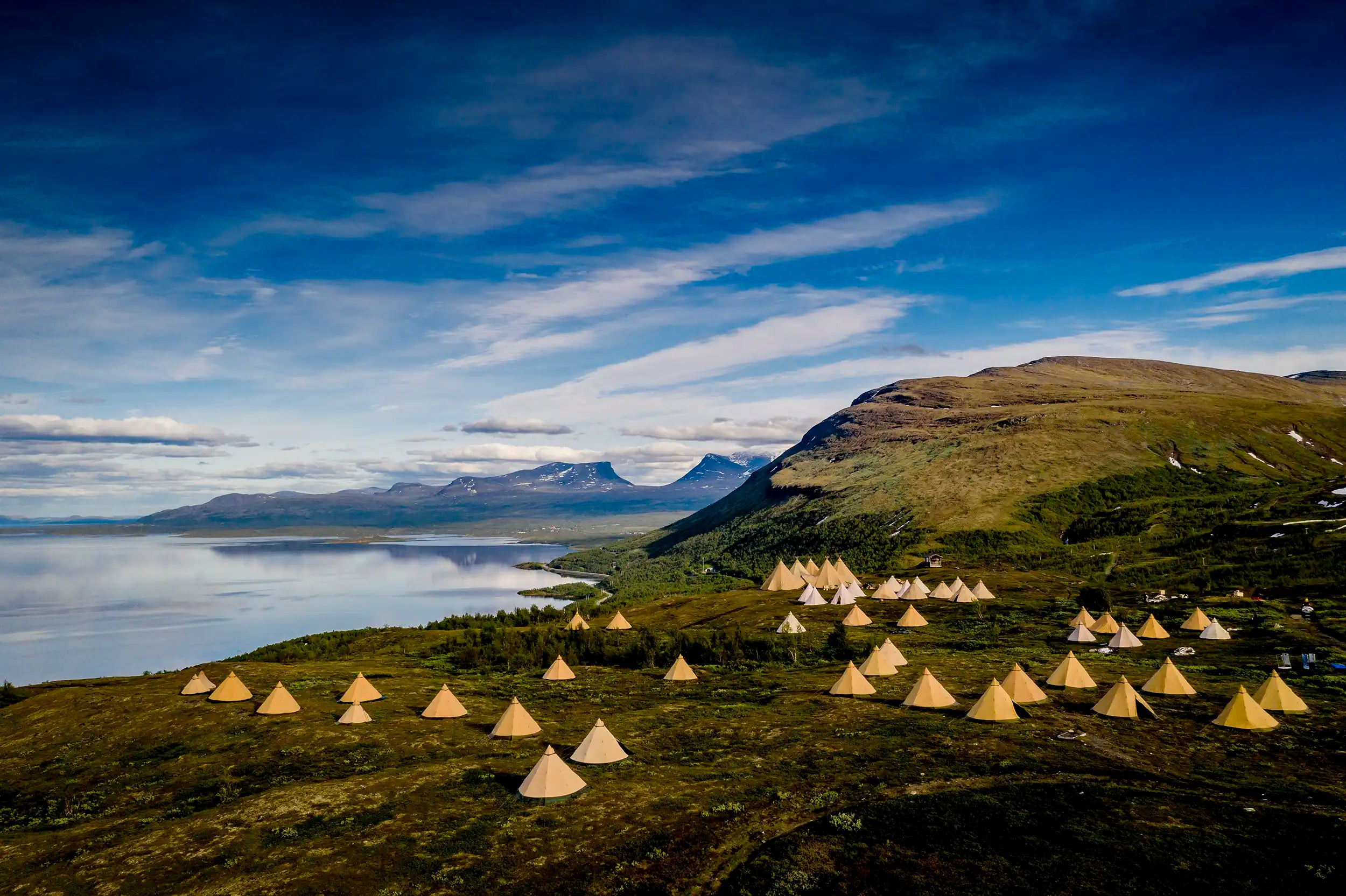
The story
It started in Swedish Lapland
The idea came to me when I was sitting by a stream, far out in the wilds of Swedish Lapland. I was tired and hot after a long day of exciting white-water rafting and river canoeing. All I wanted to do was socialise and eat dinner with my friends around a fire. There were six of us divided on two tunnel tents, we were cooking outside and the mosquitoes were horrendous. I felt we were missing something in our environment that was preventing us from relaxing and being close to each other.

More than ten years later, I was working as a church warden in the small village of Moskosel, Swedish Lapland, knowing that this wasn’t my career, but not sure of what direction I should take. One evening, as I was changing a bulb in the church hall, it all came together. I was going to make cone shaped tents – Nordic tipis. These shelters were traditionally used by the Sami people, aboriginal to this part of the world. Made to live in, built around the open fire for heat, cooking and socialising. Drawing inspiration from that design, coupled with modern materials and functions, I felt I was onto something.

With almost no experience of sewing I crafted my first tent in the basement of an old school building. I sold the tents through mail-order and at first, I was happy just to have an income to pay the rent. But soon my ambitions grew, I wanted to make the best tent in the world.

Now, many years have passed. We've long ago moved out from that basement in Moskosel – we now own the factory down the road. We’ve sold tents on all continents and we've created a worldwide Nordic tipi event industry employing hundreds of people. Our products are used for arctic expeditions as well as for hosting amazing beach parties in Mauritius. But no matter how much we've grown, our mission remains the same: to make the best Nordic tipis in the world and to treat our customers, staff and the environment with respect. Bengt Grahn Founder